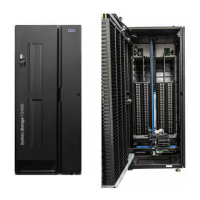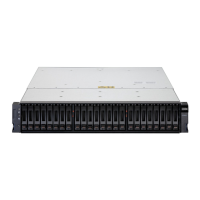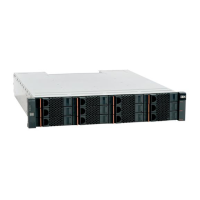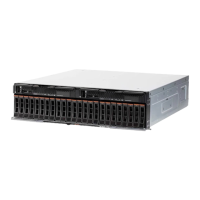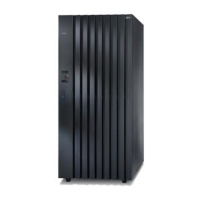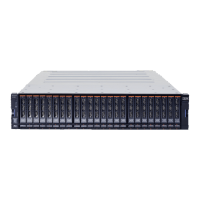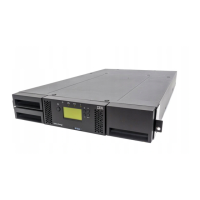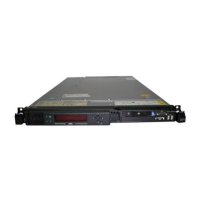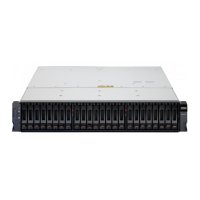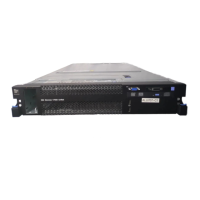296 IBM System Storage N series Hardware Guide
21.1 Hardware upgrades
The following hardware upgrades or additions can be performed non-disruptively:
Replacing the head (controller), if you are replacing it with the same type, and with the
same adapters
Replacing the system board
Replacing or adding an NVRAM or NIC, such as upgrading from 2-port to 4-port gigabit
Ethernet (GbE), or 1-port to 2-port Fibre Channel
Replacing the active/active cluster interconnect card where required on older models
21.1.1 Connecting a new disk shelf
A disk shelf can be connected in various ways. For example, a DS14 disk shelf can be
“hot-added” to an existing loop. Different procedures are required depending on the shelf
type.
To add a disk shelf to an existing loop, complete the following steps:
1. Set the new shelf’s loop speed to match the existing devices in the target loop.
2. Verify that the disk shelf ID is not being used in the loop.
3. Connect the new shelf’s two power cords and power on.
4. Connect the loop cables to the new shelf:
a. Connect cable from the A Output on the last disk shelf in the existing loop to the A Input
on the new disk shelf.
b. Connect cable from the B Output on the last disk shelf in the existing loop, to the B
Input on the new disk shelf.
5. The storage system automatically recognizes the hot-added disk shelf.
To remove a disk shelf from a loop, shut down both controllers and disconnect the shelf.
Removing a disk shelf is an offline process.
21.1.2 Adding a PCI adapter
You might be required to install a new expansion adapter to an existing storage controller. You
can perform this installation by using the NDU process to add FC ports, Ethernet ports, iSCSI
or FCoE adapters, replacement NVRAM, and so on.
To add a PCI adapter, complete the following steps:
1. Follow the normal NDU process to take over one node, upgrade it, and then giveback.
Repeat this process for all nodes.
2. Install the new adapter. If you replace the NVRAM adapter, you must reassign the
software disk ownership.
Attention: The high-level procedures that are described in the section are generic in
nature. They are not intended to be your only guide to performing a hardware upgrade.
For more information about procedures that are specific to your environment, see the IBM
support site.

